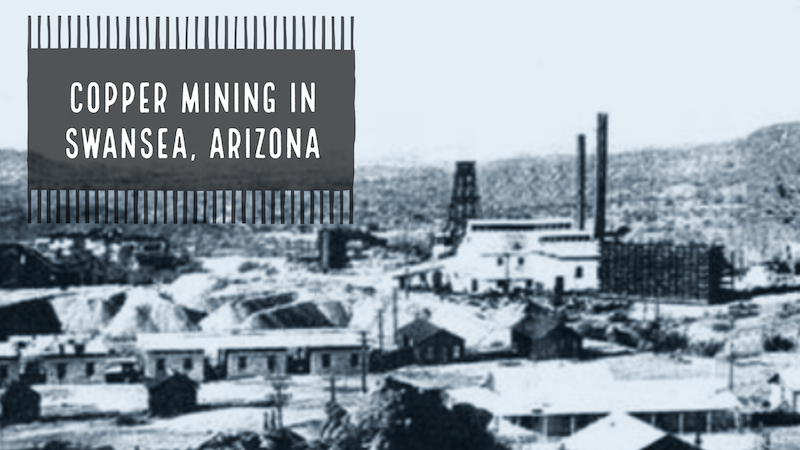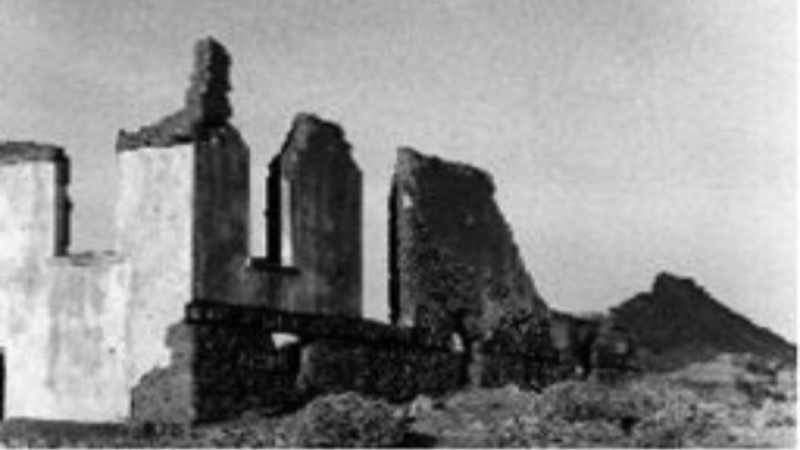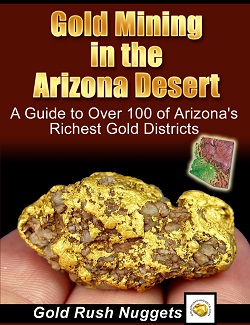
Swansea is a ghost town located about 50 miles southwest of Lake Havasu in La Paz Country. The town itself was established in 1909, but the mineral discoveries of the surrounding hills were made much earlier.
The town’s mining was centered primarily on mining of copper ore, where it was specialized in processing and smelting of the ore, which was transported from other nearby areas. Other minerals extracted in the area included silver, gold and iron, which came as secondary in the production process.
Copper Strikes in Arizona
In the year 1882, the prospecting and mining activities were first commenced. However, since mining was conducted in one of the harshest and remotest areas in the country at that time, serious mining activities were seriously hindered for many years.
In 1904, local miners namely Newton Evans and Thomas Jefferson Carrigan got an opportunity to develop the area at a time when the first railroad was brought to the nearby area called Parker, connecting from Wickenburg.
After a few years, the miners were able to construct a 350 tons furnace, hoists for five mine shafts and the water pipeline to the Bill Williams River. When the town was first established it was referred to as Signal.
In 1908, when the claims were fully settled by the Clara Gold and Copper Mining Company, the headquarters was set up in the mining camp and called it Swansea. In that very year, the intended Arizona and Swansea Railroad was used to link Signal to Bouse which was located about 25 miles away. As a result, even the population of the town grew to about 750 settlers.

The ruins at Swansea.
Dependent on the Railroads
At the time mining operations began in the area for the first time, there were no facilities to conduct smelting. And this meant that copper ore had to be transported to other areas for smelting, such places included Swansea Wales were the refined copper was shipped.
In 1909 signal was renamed after one of the destinations for copper smelting, called Swansea. In the same year the first post office was commissioned, which was in operation up through 1924.
Eventually, other facilities began to come into existence, among them was an electric light company which led to the coming of several other facilities such as an auto dealer, a saloon, theatre, restaurants, barbershops, an insurance agent, a lumber company, local mining and smelting facilities and.
In the year 1912, the major mining company that was conducting mining activities went bankrupt despite conducting the mining operations, as the company was running at a loss where the smelter was consuming more coke compared to the copper extracted from the ore.
During World War 1 a son to William A. Clark the mining magnate known as Charles Clark, the owner of the United Verde Mine in Jerome, made attempts to run the mining operations. But the property was leased for a decade after a set of agreements by Arizona Smelting Company to Swansea Lease, Inc. which operated as a subsidiary.
After two years of operation, a floatation mill was constructed at Swansea. But later challenges arose when the smelter was closed at Humbolt in November 1924. As a result, years later the mine came to a closure, and the removal of facilities such as the rail in 1930s.
Recent History of the Swansea Copper Area
In the 1990s some efforts were made to prevent total eradication of the place through Swansea Stabilization Project, which arrested the natural and intentional decay of the area.
As at now, the remnants of the town include the railroad depot, the structures of the adobe miners’ headquarters and the concrete walls of the smelter. The place is just visited for adventure in the present day.
The remnants of Swansea sit quietly as a ghost town today. It was once a vibrant place, full of life for decades when the mining activities were at the peak, with copper being the major mineral resource that was extracted from the ore. Other minerals extracted included silver, gold and iron which were secondary products.
Next: Metal Detecting for Gold Nuggets in Arizona

